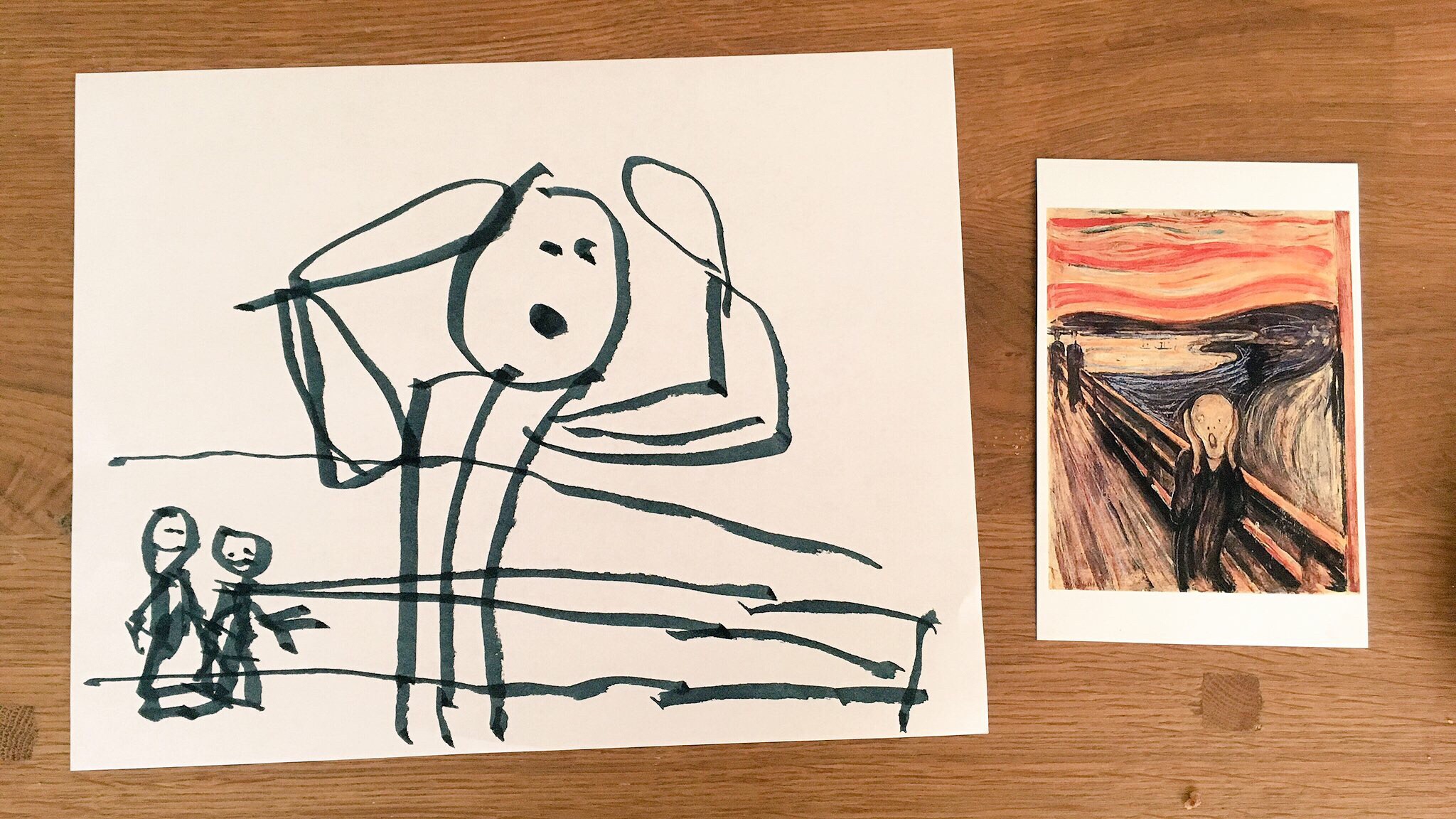 As copied by Jules, age 3. His drawings always seem to express how I feel…
As copied by Jules, age 3. His drawings always seem to express how I feel…
A bad equation
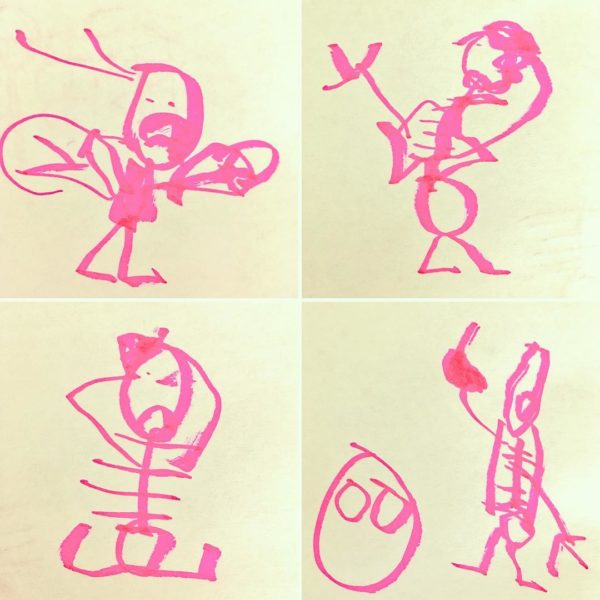
The U.S. birth rate sank to a 30-year low in 2017 (gee, I wonder why?) and the supposed clash between parenting and creativity is a hot topic in publishing. In the past half decade, we’ve seen a whole batch of mothering/art books, many of them quite wonderful, including Sarah Ruhl’s 100 Essays I Don’t Have Time To Write, Jenny Offill’s Dept. Of Speculation, and Maggie Nelson’s The Argonauts. A few years ago Meghan Daum published a collection of writers on their decision not to have kids, called Selfish, Shallow, and Self-Absorbed. This year there’s Meaghan O’Connell’s And Now We Have Everything and Sheila Heti’s Motherhood. (These are just the books I can name off the top of my head.)
Earlier this year, I was sitting in a theater next to someone who works in publishing (a rare event for me, believe it or not) and he said, “Yeah, you know, there’s a ton of books about art and motherhood, but not a lot new out on art and fatherhood.”
Right on time, here comes Michael Chabon’s Pops: Fatherhood in Pieces. I haven’t read it yet, but I’ve really liked Chabon’s previous writing on fatherhood, including the great essay “William and I,” from Manhood For Amateurs, which begins with the perfect line, “The handy thing about being a father is that the historic standard is so pitifully low.” Another great essay was “My Son, The Prince of Fashion,” about attending Paris Fashion Week with his son, Abe.
The excerpt from Pops currently making the rounds is “Are Kids The Enemy of Writing?” Chabon recalls standing with a Famous Lit’ry Man and being warned, if he wanted to be a Great Writer, not to have children. “You lose a book,” the man said, “for every child.”
Chabon was clearly disgusted by the interaction and is more than okay with his decision to have his four children, saying he’s going to die no matter what and his books will probably be forgotten anyways, and:
Once they’re written, my books, unlike my children, hold no wonder for me; no mystery resides in them. Unlike my children, my books are cruelly unforgiving of my weaknesses, failings, and flaws of character. Most of all, my books, unlike my children, do not love me back. Anyway, if, 100 years hence, those books lie moldering and forgotten, I’ll never know. That’s the problem, in the end, with putting all your chips on posterity: You never stick around long enough to enjoy it.
A beautiful thought. But what I’m puzzled by in this piece is that Chabon, though he seems like a devoted father, never really questions that equation “you lose a book for every child,” even though it is demonstrably untrue in many cases.
Take, for example, several classic children’s books. A.A. Milne made up Winnie-the-Pooh for his son, Christopher Robin Milne. Astrid Lindgren’s bedridden daughter Karin asked her to tell a story about some girl named Pippi Longstocking. C.S. Lewis convinced J.R.R. Tolkien to turn the fantastical stories he told his children into The Hobbit. The list goes on and on — and that’s just children’s books, not to mention all the art and music and film that’s been inspired by children.
I am the father of two beautiful boys, but I am not an evangelist for having children. (I mean, have you looked around?) Having children in America is difficult no matter what your profession: health care is dismal, the costs of child care are astronomical, our public education system is being stripped for parts, inflated tuition and student loans have turned higher education into a one-way ticket to indentured servitude, and adulthood, if you survive to enter it, is not all that hot, either.
No working writer with kids is able to write without a ton of help.
The bad equation “for every child you lose a book” and all that “Pram in the Hall” nonsense is the kind of toxic thinking that gives writers an excuse to be negligent parents — “Nobody remembers Shakespeare’s children,” Faulkner growled — but it also severely underestimates the creative potential of children.
Rather than seeing my children as a constant drain on my creativity, it has made me a better father and a better writer to see them as creative catalysts, or energizers. (See my post: “Borrow a kid.”) I have been helped along to this point by the terrific example of so many creative mothers and fathers I’ve been lucky to know, and it’s for this reason I often share, on this blog, some of the creative shenanigans the boys and I have been up to.
It’s not that my boys magically made me a better person and a better artist, it’s that my boys make me want to be a better person and a better artist.
“Art is too long, and life is too short,” wrote Grace Paley. “There’s a lot more to do in life than just writing.”
Of course, every creative life requires sacrifices, but I would encourage us to not accept the “for each child you lose a book” equation in the first place. Children, like anything else in your life, if you love them, pay attention to them, spend time with them, and reflect on your experiences with them, can lead you to your best work.
Above: drawings by my 3-year-old
What to keep
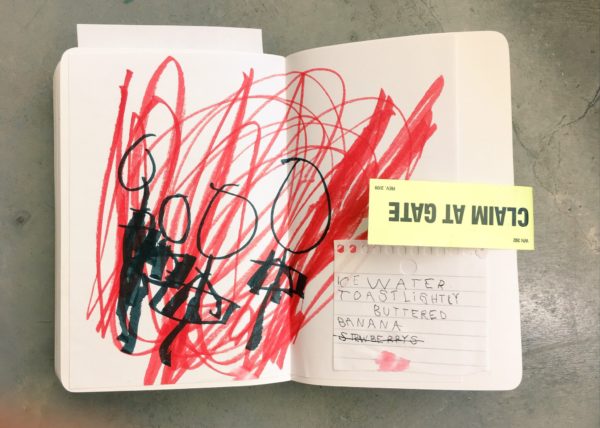
Some of the kids’ drawings fall into the “I don’t want to recycle this, but I can’t see keeping it in a folder,” and those often get pasted into my notebook. Funny thing is, I have a hunch that these collaged scraps will mean more to me in the future than some perfect, saved drawing. (“Oh, this is when J was into drawing Kraftwerk and O was into playing waiter…”)
Storing up images

I love reading more than one book at a time and letting the books talk to each other. I love promiscuous reading. Here’s Octavia Butler on her practice:
I generally have four or five books open around the house—I live alone; I can do this—and they are not books on the same subject. They don’t relate to each other in any particular way, and the ideas they present bounce off one another. And I like this effect. I also listen to audio-books, and I’ll go out for my morning walk with tapes from two very different audio-books, and let those ideas bounce off each other, simmer, reproduce in some odd way, so that I come up with ideas that I might not have come up with if I had simply stuck to one book until I was done with it and then gone and picked up another.
I’m currently dipping in and out of two books: 1) Harold Gatty’s Finding Your Way Without Map or Compass — a 1958 wayfinding manual and Christmas gift from my wife — and 2) Tom Hart’s How To Say Everything, material Tom’s been working on for the past decade, but just recently published in book form.
They compliment each other beautifully on the subject of storing up images. Here’s Gatty:
There is something which all the greatest artists and writers, naturalists and scientists, voyagers and explorers, poets and pioneers, share. It is an interest in the external world and the ability to contribute something creative to human life in this world by means of taking parts of the world to pieces and putting them all together again. The ability to observe, and the ability to see the little things that seem trivial at first, may become amazingly important and meaningful. Out of little observations huge ideas may grow; and if a mind, made receptive by training in the use of the senses, can store away a mass of observations, the time will come when the whole collection can be unrolled, connected together as a great novel is planned, in a compelling pattern that tells us something new.
And here’s Hart, quoting Stanislavski, in his chapter, “Creating A Store”:
You must be constantly adding to your store. For this purpose you draw… principally upon your own impressions, feelings and experiences. You also acquire material from life around you, real and imaginary, from reminiscences, books, art, science, knowledge of all kinds, from journeys, museums and above all from communication with other human beings.
In both of these contexts the word “store” refers to stocking up or keeping a supply for future use, like a squirrel, but it also conjures retail associations in my brain. I’m reminded of Allen Ginsberg, in “A Supermarket in California,” who, dreaming of Walt Whitman, wandering around, looking at the moon, stops into the neon supermarket, “shopping for images.”
That seems to be so much of what I’m always doing — shopping for images — adding to the store, stocking up for the future…
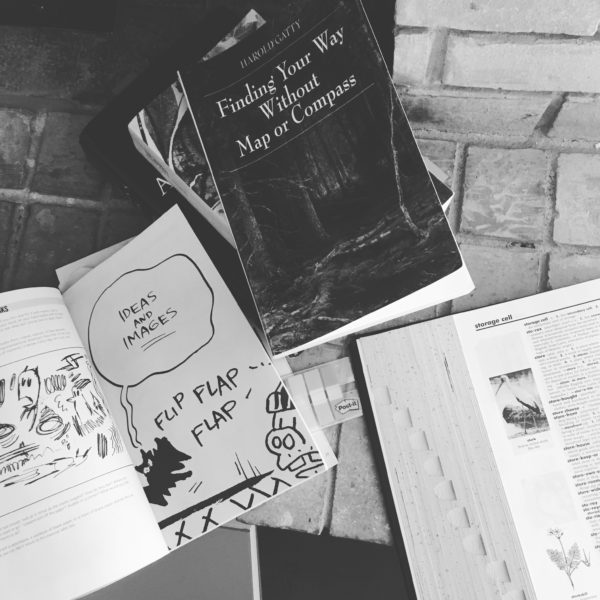 Top image: Drawing of a brain by Jules (3)
Top image: Drawing of a brain by Jules (3)
Easy as 1-2-3
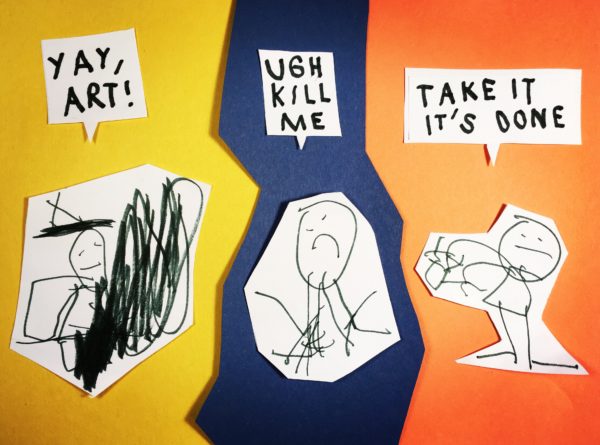
After we put the boys to bed, my wife and I clean up the 3-year-old’s dozens of drawings he leaves all over his drawing space, deciding what to keep and what to recycle. The figures above were all drawn on the same piece of paper and I thought they could tell a story, so I cut them out and had my 5-year-old letter the speech balloons. They’re still too young to (peacefully) jam together, so I like doing these little orchestrated collaborations. (Previously: “What do you know?”)
- ← Newer posts
- 1
- …
- 8
- 9
- 10
- 11
- 12
- Older posts→